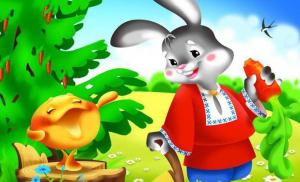Medieval India presentation. Presentation on the history of "India in the Middle Ages"
Gupta EmpireIndian Middle Ages Begins with an Empire
Guptov. The Guptas united numerous
principalities. The rise of Indian culture
architecture, literature characterizes this
period.
The Gupta Empire existed in North India from 4
to 6th century
Ajanta. The Ajanta temples are cut down in almost
steep cliffs of the picturesque valley, decorated
numerous Buddha statues. Ajanta was
a kind of monastery-university, where
Monks studied and lived. In addition, it served as a place
Buddhist pilgrimages not only in India, but also
other countries. Classic early Indian monument
Middle Ages - Kailasanatha Temple in Ellora,
place of the legendary habitat of the god Shiva. All this
splendor carved into the rocks by low people
caste
Main activities
The climate of India was conducive to studiesagriculture. It's always warm here, and the earth
fertile. Indian farmers
grew wheat, rice, barley, legumes,
cotton, sugar cane, spices. Very
The coconut palm was valued in coastal areas.
The Indians were good cattle breeders. In their
on farms they raised cows, buffaloes,
camels, goats, horses. They managed to tame
even the largest animal on land - the elephant. In India, since ancient times, there has been
a large number of cities. Those who lived in them were skilled
artisans had many professions.
Blacksmiths were famous far beyond the borders of the country,
foundries, jewelers, goldsmiths,
gunsmiths. The Indians learned to make
beautiful cotton fabrics that were so
as thin as a woman's wedding dress could be
Easy to thread through wedding ring.
Sociopolitical structure
India of the pre-Muslim period did not know a clearadministrative division. Along with
numerous principalities headed by the Raja
there were states on the territory of India
led by the supreme ruler who gave
lands to their governors for management (without
inheritance), but the Raja conquered new lands
and became a ruler, and, on the other hand,
the states weakened and the governors themselves
became rajahs.
Varnovo-caste system
The most important feature of life in India in the Middle Agescentury there was the preservation of the Varna-caste system.
All castes belonged to one of the four varnas in
depending on social status,
origin, profession. But there were castes
"untouchables", the lowest, they were not included in
varnas and it was impossible to communicate with them.
Hinduism, the most widespread religion
India,
supported
division
of people
to castes.
Transition
from one
was a different caste
impossible
it is forbidden
it was and
enter into marriages if the bride and groom were from different castes. Castes
were isolated from each other, their members had, as a rule, one
occupation, passing on its secrets by inheritance.
Features of the Varnovo-Caste system
The peculiarity of Indian society was itsdivision into four groups (estates) - varnas: brahmans
(priests), Kshatriyas (warriors), Vaishyas (farmers and
traders) and sudras (dependent people). They were born
back in ancient times
In the Middle Ages, the structure of society became more complex, the development
economy led to the emergence of new occupations for people. Varna
gradually began to break up into smaller castes. Among
Brahmins created castes of officials, doctors, and teachers.
Inequality remained between them. Priest castes
rulers, warriors, representatives of the elite of the peasantry
communities were considered superior. The middle position was occupied
community farmers, traders, artisans. To the lowest
castes owned servants and slaves.
VI-XI centuries
In the sixth century, the Gupta Empire collapsed under pressurenomadic tribes, many small ones formed
states
At the turn of the tenth and eleventh centuries in
Northern India was invaded by Muslim troops
under the command of Mahmud Ghazni of
Central Asia, they plundered Northern
India, temples destroyed. This part of India was
annexed to the Ghaznavid state.
Delhi Sultanate
By the thirteenth century, Muslim conquerorsexpanded their possessions in Northern India
An independent state, the Delhi Sultanate, was formed. The state religion in the sultanate was Islam.
The central administration relied on
state ownership of land. Higher
power belonged to the sultan.
In 1398, troops invaded North India
under the command of Timur (Tamerlane).,
ruler of a powerful state with its capital in
Samarkand. Representatives of the last two
dynasties of the Delhi Sultanate were
proteges of the Timurids. An end to their dominance and the existence of Delhi
the sultanate was founded by Babur, the ruler
Fergana and Kabul. He founded the state
called the Mughal Empire. A peculiar synthesis of Islam and
Hindu elements reflected in the religion
Sikhism. Sikhs acknowledged the existence
one god, castes and tribes were denied
cults. Sikhs actively fought against
existing orders of the Great Empire
Mughal. This struggle ended with the creation
own Sik state.
South India
South and Central India lagged behind in theirdevelopment. There were many principalities here.
In South India the largest
states were the Islamic state
Bahmani and the Hindu state of Vijayanagar. A typical example of a peculiar
Mughal state style may
serve the Taj Mahal mausoleum in Agra,
built by Akbar's successor in memory of
beloved wife. Another remarkable monument is
Victory Tower 87 meters high - Qutab Minar.
Let's sum it up
In medieval India there was no singlestate and the strong power of the ruler. She
was often subjected to foreign invasions, and in the 11th
century, northern India was conquered by Muslims.
India has been influenced by different peoples and
cultures, but retained its originality.
In medieval India, such
religions like Buddhism, Hinduism, Islam and Sikhism.
Because of this, contradictions in the
state.
Having united vast areas of northern India under their rule, the country was experiencing a golden age. The power was completely decentralized, but despite this, it was very rich. In the middle of the 6th century it was conquered by the nomadic Hephthalites.
Events
In the middle of the 7th century, Islamic invasions of India began; this event is considered the boundary of antiquity and the Middle Ages in India. Nomads attacked and formed their own states in India earlier (for example, the Kushan Empire), but this was a phenomenon of a completely different nature. A constant confrontation between Muslims and Hindus began. India faced stable states that could provide a constant supply of forces to fight on the peninsula. In addition, Muslims brought a new religion to Hindustan, which caused even more acute contradictions.
711- the first Muslim capture of the Indus Valley, but after forty years the Muslim governor was expelled.
977 g. - The Muslim Ghaznavid dynasty manages to subjugate the Punjab region.
1193 g. - Muhammad Ghuri of the Ghurid dynasty takes possession of Delhi. After his death in 1206 and on the basis of his state, the history of the Delhi Sultanate begins.
The Delhi Sultanate would exist until the mid-16th century, when it was captured by Babur, but the Sultanate should not be considered as an integral state; it was constantly fragmented into many other smaller sultanates. In parallel with it, the Hindu state of Vijayanagara existed in the south of Hindustan.
1336-1565. - the existence of the Hindu state of Vijayanagara in the south of Hindustan.
1398-1399. - destruction of Delhi by Timur.
1526 g. - invasion of the Delhi Sultanate by Babur from the Timurid dynasty. Babur establishes his state on the site of the old sultanate, the era of the Great Mughals begins.
Participants
Mahmud Ghaznavi- Emir of the Ghaznavid state, made 17 trips to India.
Timur(aka Tamerlane) - founder of the Timurid dynasty. Destroyed India in 1398-1399.
Babur- founder of the Mughal Empire from the Timurid dynasty.
Conclusion
The 16th century not only saw the emergence of the wealthy Mughal Empire, but also the beginning of a period of European colonization. If in the Middle Ages the Indian sultanates and Hindu principalities were subjects of politics within India itself, then by the end of the 16th century they became the object of European politics. European countries will divide the coast among themselves and export spices and other valuable goods from India.
The artistic culture of India has a long history, it is the same age as Ancient Egypt. Archaeologists have established that in the 3rd – 4th millennium BC. In the valley of the Indus River in the north-west of the Hindustan Peninsula there was a civilization called Harappan. It is from this that Indian culture originates. In its development, the culture of India went through the following periods: 1. Vedic (II - I millennium BC) 2. Medieval: Early Middle Ages - VII - XII centuries (pre-Islamic period) Late Middle Ages - XIII - XVIII centuries


The culmination of this era is the birth of a new world religion - Buddhism. Her birth is associated with the phenomenon of hermitism, widespread in India from time immemorial. Hermits who left their homes in search of the meaning of life were highly revered. With the departure from the world, the spiritual ascent of a young man of a noble family, who was called “Shakyamuni” or “Shaky Hermit,” began. At the age of 30, his mind was illuminated with complete knowledge. He saw the universal connection between the phenomena of the visible and the invisible. He realized the truth: there is a human life full of suffering, and there are reasons for this, by understanding which one can achieve liberation. From now on he became Buddha - the Enlightened One. He taught people that the absence of hatred, non-infliction of evil, an honest and pure lifestyle, self-education and meditation - all this will bring nirvana - the achievement of a special state that cannot be defined as life or death. The affirmation of the equality of all people in the face of death and suffering, the preaching of non-violence, and specific instructions on how to achieve complete happiness contributed to the rapid spread of Buddhism both in India itself and in other Eastern countries: China, Japan, Indonesia, Vietnam and Central Asia. Buddhism became the official religion under King Ashoka, who managed to unite the entire Hindustan into a gigantic empire.


STUPA IN SANCHI This stone hemisphere symbolizes the sky above our heads. At the top of the dome there is a model of Mount Meru. The axis mundi runs through the entire temple building, from top to bottom. A wall rises around this man-made world. In its corners there are pillars decorated with carvings and sculptures. The first religious monuments of Buddhism were stupas - memorial structures in which the remains of Buddha were kept.

In the 1st century BC e. Chaitya cave temples are widespread in the religious architecture of India. The central corridor is separated from the side corridors by rows of columns with sculpted capitals. At the far end of the prayer hall is a stupa. Under King Ashoka, they began to carve out cave cells for hermits, creating conditions for complete solitude and meditation. Gradually, mountain shelters turned into quite large complexes - CHAYTYA (temples) and VIHARA (monasteries) Chaitya in Karli




In the 1st – 3rd millennium BC. In the northern territories of India, the Kushan state arose, founded by newcomers from Central Asia. In the Kushan era, Buddhist monasteries became centers for the development of science and art. The main achievement of this period can be considered the emergence of a plastic image of Buddha in the form of an ideally built man with a beautiful face, in a state of eternal peace. By this time, the pantheon of gods was enriched and images of beautiful and young givers of mercy - bodhisattvas - were increasingly found in Kushan art.

The period of the reign of the Gupta dynasty (IV – V centuries) is the last rise in the development of the culture of Ancient India, its “golden age”. The art of that time gained freedom in choosing themes and subjects and became poetic and expressive. The most striking example of this is the cave temple at Ajanta.

Medieval period Consists of pre-Islamic and Islamic periods of development. During this era, the Buddhist idea of renunciation became a thing of the past. The Gupta state fell under the blows of nomadic tribes - the Huns. The country broke up into many small principalities, whose rulers were concerned with preserving ancient spiritual traditions. Global ideas about the universe, characteristic of Buddhism, are a thing of the past. Brahmanism is being revived, but in a modified form, which combines ancient mythological beliefs (veneration of sacred animals), rebirth of souls (sanatra) and ideas about the law of retribution (karma). The updated religion was called HINDUISM.


KAILASANATHA TEMPLE AT ELLORE (ELLURA) The Kailasanatha Temple at Ellora is an unsurpassed masterpiece and one of the most impressive architectural structures. The temple was built over 150 years; 7 thousand people took part in its construction. It occupies an area twice the area of the Parthenon in Athens, and is one and a half times higher in height. The temple is dedicated to god Shiva.

In the early above-ground temple complexes one can still feel the influence of ancient rock architecture. These are the five temples of Mahabalipuram, dedicated to the cult of Shiva. But already in the 8th century, architecture features features of a different style, symbolizing the religious concept of the universe. Shiva Temple.Mahabalipuram Kandarya Mahadeva Temple




In the 13th century, the north of India was enslaved by Muslims, and an Islamic state, the Delhi Sultanate, was formed on its territory. From that time on, cultural monuments were created in line with foreign traditions. As a result of the fusion of the traditions of two cultures, the Indo-Islamic style emerges, the monument of which is the huge minaret Qutb-Minar (73 m), which combines the strict form traditional for a minaret with the plasticity of ribbed semi-columns, rich and elegant in an Indian way.

During the Mughal era (XVI-XVII centuries), Muslim art experienced an even stronger influence of Indian culture. The legendary monument of this era is the Taj Mahal mausoleum, created in memory of the beloved wife of the ruler Shah, Ceyhan. In the 18th century, the development of medieval artistic culture in India ended. The colonization of the country by the British opened a new stage in the development of the country, which ended in the 20th century. Mausoleum Taj Mahal

BOOK MINIATURE OF INDIA The main feature of the Mughal miniature, which experienced its heyday under the first emperors, was the ever-increasing tendency to convey the real appearance of people, objects, and nature. One of the most interesting achievements was the “Mughal portrait”. Its main goal is to convey similarities, characteristic facial features, and, if possible, the psychological characteristics of the character.

MUSIC OF INDIA The word "sangeet", meaning "music" in many Indian languages, literally translates as "bringing together and expressing everything." The most important place among the musical instruments of Ancient India belonged to percussion and strings. Tabla Vina. Sitar. Sarangi

THEATER OF INDIA The theatrical art of India originated in the 1st and 2nd centuries. BC. and its creation is attributed to a sage named Bharata. According to legend, the god of war Indra asked the creator Brahma to come up with entertainment that would appeal to all people. Brahma extracted recitation, singing, acting and aesthetics from the four Vedas and taught these arts to Bharata, ordering him and his hundred sons to protect and establish this art in earth. Brahma formulated the main tasks of the theater: to teach and entertain. The earliest plays that have come down to us were written in the classical language of India, Sanskrit, and allow us to draw a conclusion. That at that time dramaturgy was a developed heat of theatrical art. The favorite subjects of the plays are folk tales and legends, heroic deeds of royal sages and love.

The highest goal of the performance was to achieve RASA - aesthetic pleasure arising from the skillful performance of the actor. Eight basic feelings (comic, pathetic, erotic, anger, heroic, horror, hatred, amazement) were to be embodied by the actors. A characteristic feature of Indian theater is the unity of music. singing and dancing. Figurine of a dancing girl (Mohenjo Daro - 3rd millennium BC)

QUESTIONS AND TASKS: a) stupa in Sanchi; b) Shiva temple in Mahabalipuram; c) temple in Ajanta; d) temple in Karli; e) Kandarya Mahadeva Temple; h) Mahabodhi Temple in Bodh Gaya; f) Kailasanatha Temple in Ellora. 1.Find matches: 1 7


4.Answer the questions: -What stages is the development of Indian culture divided into? -Why is the very first period called Vedic? -What epic works were created during this period? What is their essence? - what religions were formed during the Vedic period? -tell us about the features of the ethical and philosophical quests of the Vedic period.

Ancient Indian culture had a great impact on the culture of other countries. Since ancient times, its traditions have been intertwined with the traditions of the East. In modern India, cultural heritage is respected. This country is characterized by the vitality of ancient traditions and it is not surprising that many achievements of ancient Indian civilization were included in the general cultural fund of Indians. They have become an integral component of world civilization, and India itself remains one of the most beloved and mysterious countries in the world, a land of wonders. CONCLUSION:

India. In the 4th-6th centuries, the Gupta dynasty ruled in Northeast India. The state reached its greatest size during the reign of Chandragupta II. All of Northern India belonged to the Guptas. But from the second half of the 5th century, the Guptas began to be attacked from the north-west. Hephthalites or White Huns. In the 6th century, they captured part of Northern India, and the Gupta state fell. A period of feudal fragmentation began. In the 4th-6th centuries, the Gupta dynasty ruled in Northeast India. The state reached its greatest size during the reign of Chandragupta II. All of Northern India belonged to the Guptas. But from the second half of the 5th century, the Guptas began to be attacked from the north-west. Hephthalites or White Huns. In the 6th century, they captured part of Northern India, and the Gupta state fell. A period of feudal fragmentation began. Indian peasants lived in communities. Since artisans did not cultivate the land, the community allocated them part of its harvest. Rent in kind was paid to feudal lords. In the era of fragmentation, India broke up into small states ruled by rajas. Indian peasants lived in communities. Since artisans did not cultivate the land, the community allocated them part of its harvest. Rent in kind was paid to feudal lords. In the era of fragmentation, India broke up into small states ruled by rajas. The main food of that time in Northern India was wheat, in Southern India it was rice. Meat was rarely eaten. The main food of that time in Northern India was wheat, in Southern India it was rice. Meat was rarely eaten. Fragmentation remained from the 6th to the 12th centuries. Fragmentation remained from the 6th to the 12th centuries. In the 7th century, the commander Harsha managed to unite all of northern India through conquest. Kanauj became the center of this powerful state. But after the death of Harsha, this state collapsed. In the 7th century, the commander Harsha managed to unite all of northern India through conquest. Kanauj became the center of this powerful state. But after the death of Harsha, this state collapsed.



Muslim invasion. In the 8th century in the north-west. Muslim conquerors appeared on the borders. Ruler Mahmud made 17 campaigns in the 11th century. Mahmud owned lands from the Caspian Sea to the snow-capped ridges of the Hindu Kush: he ruled with an iron fist and went down in history as the famous warrior who stopped the invasion of the nomadic Turks and conquered the Indus Valley. But he could not consolidate power here. And the rule was started by Muhammad Guri, but in 1206 Muhammad died at the hands of assassins. His heir to the throne, Qutb ad-din Aibak, completed the conquest of Northern India and created his own state, the Delhi Sultanate. The Delhi Sultanate existed for a year. At this time, Arabic and Persian languages became widespread in India. Land became state property and non-Muslims had to pay a poll tax.

Fall of the Sultanate. In the 14th century, small principalities began to separate from the state, whose rulers no longer wanted to recognize Islam. The fall began in 1398, when Emir Timur destroyed Delhi. Descendant of Timur Babur in 1526 conquered the Delhi Sultanate and founded the Mughal dynasty. This dynasty ruled until 1858. But the unification of India was not lasting. In 1347 The Muslim state of Bahmani arose in Central India. It was constantly at war with its southern neighbor, Vijayanagar.


Buddhism. Buddha believed in the eternity of the laws of nature. Buddhism is not only a religion, but rather an entire cultural movement. Buddhism is based on the teachings of Siddhartha Gautama (or Buddha), who proclaimed universal kindness and love. Buddhism flourished in India in the 5th-7th centuries, and then its decline began. Buddhism finally faded into obscurity in the 12th-13th centuries, when India was captured by Muslims. Buddhism is divided into: 1) HINAYANA (emphasizes benevolence) 2) Mahayana (the goal of bodybuilding) 3) TANTRISM.

Decline of Buddhism. HINDUISM. The cause of the decline was the Muslim invasion. A number of principles of Buddhism passed into HINDUISM. HINDUISM was formed in the 8th-9th centuries on the basis of ancient Indian Brahmanism. The gods were led by a trinity: Brahma (the creator god), Vishnu (the guardian god) and Shiva (the destroyer god). The meaning of Hinduism can be expressed in the words: *Live and let others live*


Sanskrit language. Along with Buddhism and Hinduism, it is the third phenomenon characteristic of Indian culture. In the 5th century, Sanskrit was no longer the language of the people, but all literate people spoke it. Books were written in Sanskrit. All modern languages of India are derived from Sanskrit.

Trade. Trade was brisk. Spices, bamboo, and pearls were sent from the port city of Calicut. They brought copper, corals, morocco, gold, silver, woolen fabrics and horses. For a long time, India was considered a rich country. They made gold and silver utensils and cut precious stones. Ivory figurines were prized. The finest, airy fabrics were produced here. Indian doctors knew how to perform operations on the skull. Painkillers were also used!















